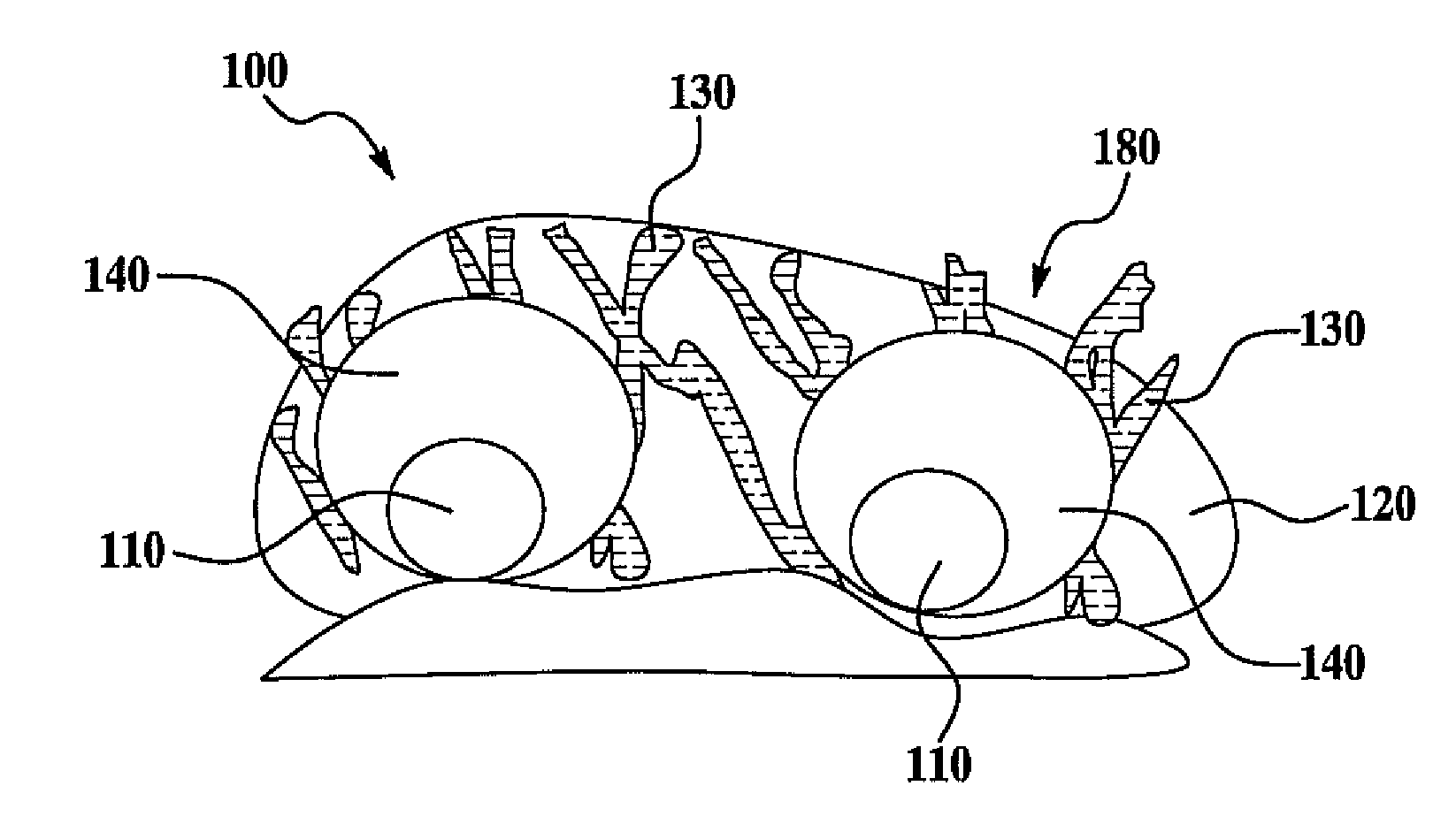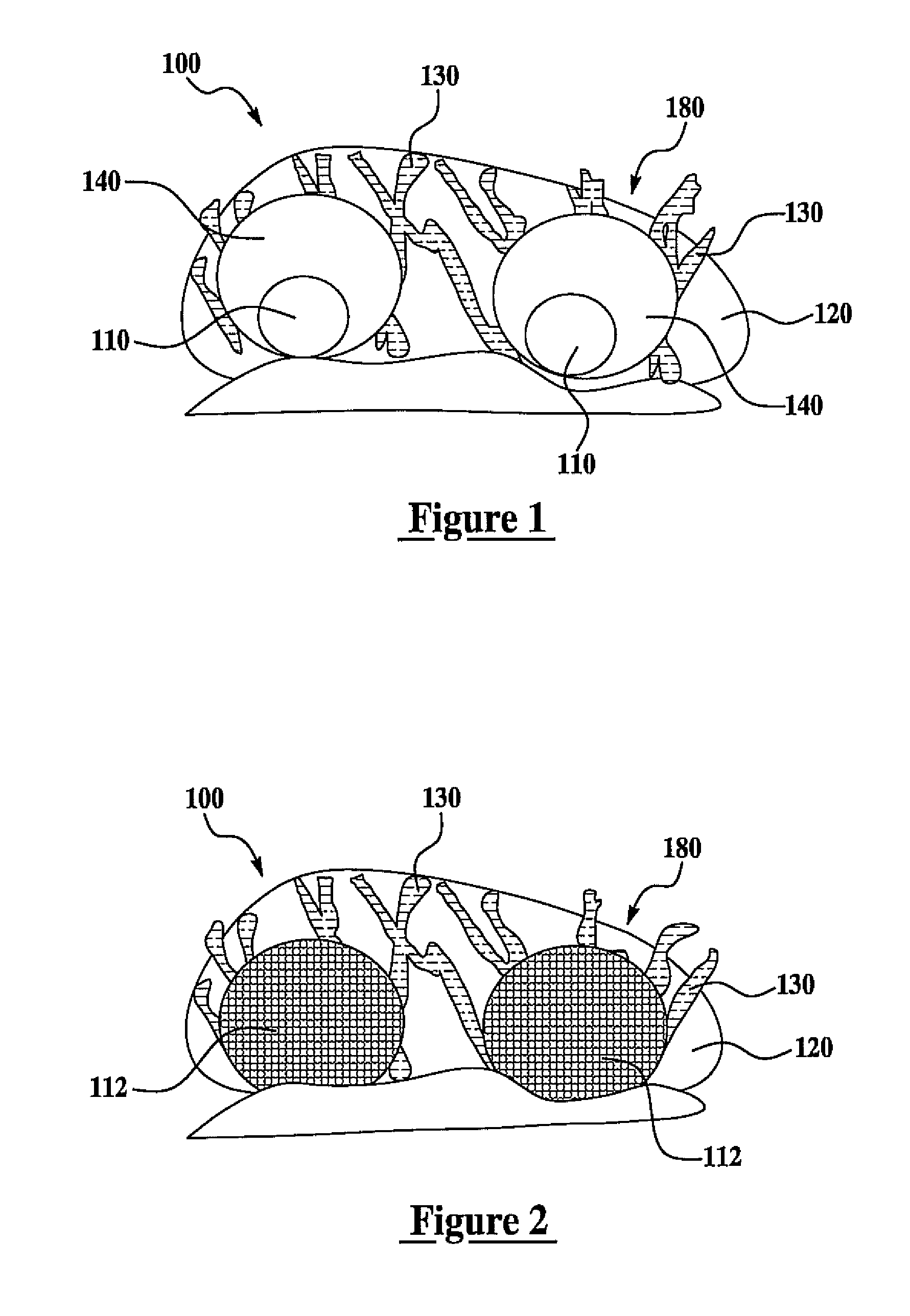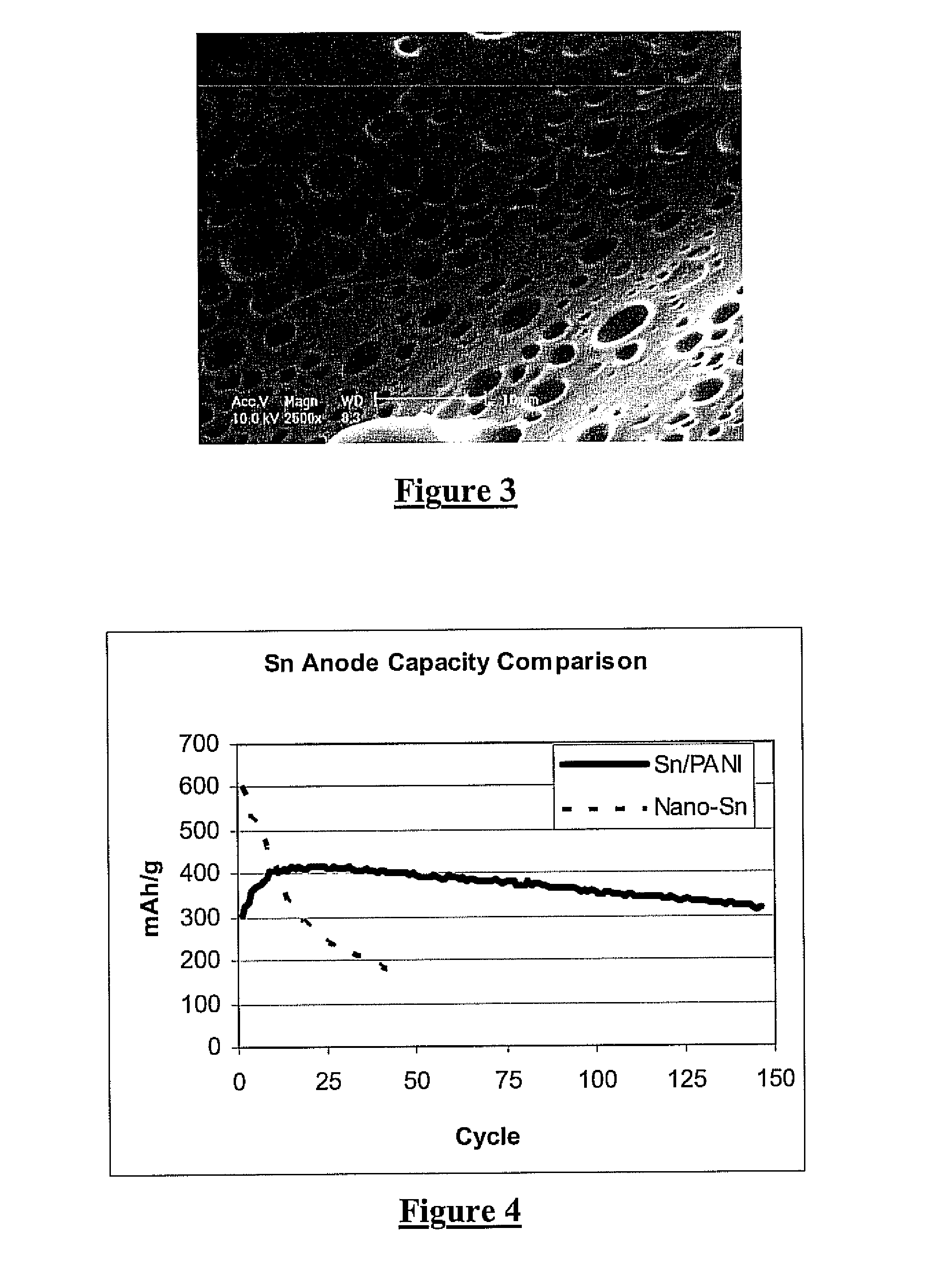High performance anode material for lithium-ion battery
a lithium-ion battery, high-performance technology, applied in the field of lithium-ion batteries, can solve the problems of battery specifications not being met using traditional lithium-ion battery chemistries, battery energy requirements are continually increasing, and the volume and mass constraints remain
- Summary
- Abstract
- Description
- Claims
- Application Information
AI Technical Summary
Benefits of technology
Problems solved by technology
Method used
Image
Examples
example 1
[0025]A typical synthetic procedure for UV polymers includes 1 g of PC1000, 0.5 g of PC2003, 0.2 g Decahydronaphthalene (porogen), 2 g nitro-methane (solvent), and 0.02 g photo-initiator loaded into a tall-form quartz beaker and mechanically stirred vigorously for 30 minutes in the absence of light. The mixture is then sonicated using a VCX 750 Vibra-cell ultrasonicator for 20 minutes. With continued stirring, the mixture is placed 10 cm from a UV lamp in a UV box with UV irradiation continued for 1-10 minutes. The solid content is then filtered out and washed using de-ionized water. Finally, the UV polymer is dried in an oven at 80° C. under vacuum for 24 hours. The resulting structure, demonstrating pores inside and outside the UV polymer, is shown in FIG. 3.
example 2
[0026]A comparison of nanoparticles of Sn versus an unoptimized configuration of the Sn / polymer matrix material is shown in FIG. 4. As shown in this figure, the unoptimized configuration of the Sn / polymer matrix material shows good cycle stability. The Sn / PANI composite composition tested is 1:1 (wt) and the electrode composition is: Sn / PANI:carbon (electron conductive additive):SBR / CMC(6:4) (binder)=8:1:1 (wt)+Optimization of the Sn / polymer matrix material could include: 1) refining the polymer:Sn ratio to improve capacity, while retaining good cycle life; and 2) optimizing synthesis conditions for the purpose of obtaining uniform pore size, etc.
PUM
| Property | Measurement | Unit |
|---|---|---|
| porosity | aaaaa | aaaaa |
| porosity | aaaaa | aaaaa |
| porosity | aaaaa | aaaaa |
Abstract
Description
Claims
Application Information
 Login to View More
Login to View More - R&D
- Intellectual Property
- Life Sciences
- Materials
- Tech Scout
- Unparalleled Data Quality
- Higher Quality Content
- 60% Fewer Hallucinations
Browse by: Latest US Patents, China's latest patents, Technical Efficacy Thesaurus, Application Domain, Technology Topic, Popular Technical Reports.
© 2025 PatSnap. All rights reserved.Legal|Privacy policy|Modern Slavery Act Transparency Statement|Sitemap|About US| Contact US: help@patsnap.com



